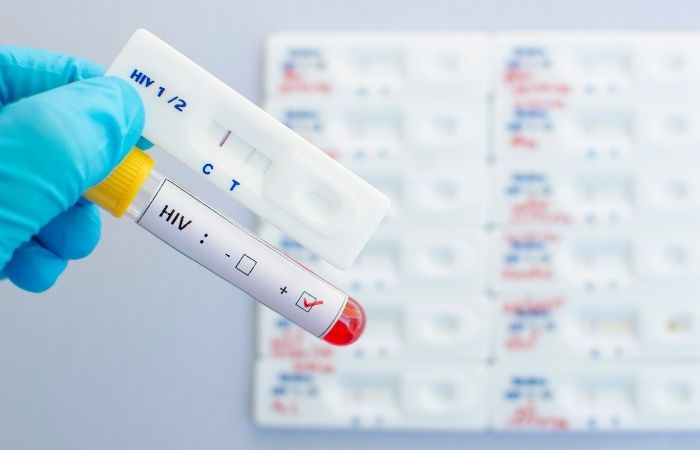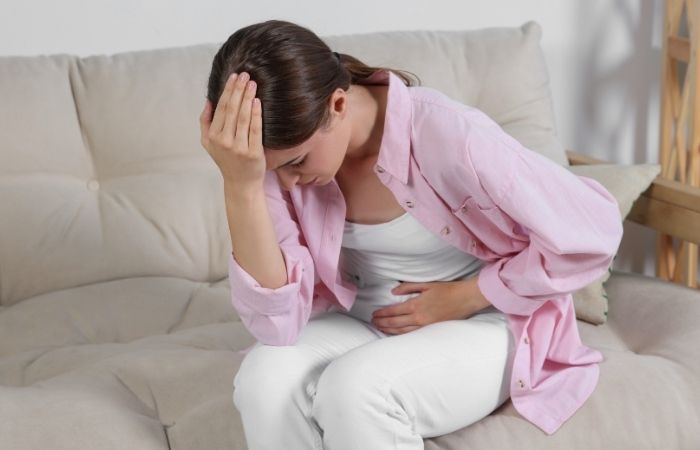The Future of STD Testing: How At-Home Kits Are Changing the Game
What Are the Incubation Periods for Sexually Transmitted Diseases?
The incubation period of sexually transmitted diseases is the time it takes between exposure to symptom exposure. This period varies according to the STD and can have a big impact on test results, which makes understanding how long you should wait before being tested absolutely crucial.
- Chlamydia and Gonorrhea: Symptoms tend to appear one to three weeks after exposure; however, many cases can be asymptomatic.
- Syphilis: Symptoms can show anytime from ten to ninety days after exposure.
- HIV: First symptoms, such as flu-like symptoms, tend to appear after two to four weeks, but it can take several months for the virus to show up in tests.
- Herpes: Blisters or sores can appear within two days of exposure, though the symptoms can also be delayed for as long as twelve days.
- HPV: Warts may appear several weeks to months following the infection, but it varies from person to person.
Though it may appear more convenient, waiting until symptoms appear is highly discouraged, so if you believe you've been exposed, we recommend getting tested as soon as it is convenient and once again if symptoms appear.

Why Testing Is So Important
Tests are not only useful to get a diagnosis but can double as a form of protection for your health and your partner's. Infertility, pelvic inflammatory disease, and an increased risk of HIV are some of the severe health problems born from untreated STDs, many of which take a while to show symptoms.
Asymtomatic infections are also a thing, which means that you can be infected and pass on an infection without symptoms, even though you may feel perfectly well. Testing regularly if you have multiple partners or an active sex life can help you detect STDs even if you present no symptoms, and with at-home STD tests, being able to prioritize your health is now easier than it ever has been.
These kits enable you to conduct tests in a discreet manner—so, in essence, private and convenient without having to pay a visit to any clinic.
Order Now $119.00 $294.00 Check Your STD Status in Minutes
Test at Home with Remedium
6-in-1 STD Test Kit




For all 6 tests
Common Symptoms That Recommend Getting Yourself Tested
While some sexually transmitted diseases (STDs) do not create any symptoms, others may generate symptoms that are obvious and indicate the need for testing. Should you suffer any of the following symptoms, it is imperative that you seek medical attention as soon as possible in order to safeguard your health and avoid any potential complications:
Ununsual Discharge
For women, unusual changes in vaginal discharge—such as differences in color, consistency, or odor—can be signs of infections like chlamydia, gonorrhea, or trichomoniasis. In men, a discharge from the penis may be due to gonorrhea or chlamydia.
Painful Urination
This symptom may indicate a UTI or the presence of one of the sexually transmitted infections such as gonorrhea, chlamydia, or trichomoniasis.
Lesions, Blisters, or Sores
The presence of sores, blisters, or lesions in the genital area may indicate herpes or syphilis infection.
Wounds that do not heal need to be seen by a medical professional.
Unexplained Itching
Infections like trichomoniasis or pubic lice can cause genital itching or irritation.
Flu-like Symptoms
Fever, fatigue, aching muscles, or swollen lymph nodes may be early signs of HIV or syphilis.
Unusual Bleeding
Unexpected vaginal bleeding, especially after sexual intercourse, may indicate cervical infections such as chlamydia or gonorrhea.
Skin Rash
Unexplained rashes—particularly on the palms of your hands or soles of your feet—may be caused by secondary syphilis, though not always.
Pain in the Lower Abdominal Zone
Pelvic or abdominal pain, which is often accompanied by painful sexual relations, may be a symptom of PID, which can result from untreated chlamydia or gonorrhea.

Possible Reasons to Test
For some people, the risk of getting an STD is increased even when symptoms are not present. Testing is a must in terms of your health and prevention against the unintentional spread of the diseases. If you have experienced any of the following, you should get tested:
Unprotected Sex
The risk of STDs is much greater if sexual activity is conducted without the use of a condom or any other barrier technology. This is particularly true if the sexual health status of either you or your partner is unknown.
New Sexual Partners
When engaging in a relationship with a new partner, either with or without protection, it is advisable to be tested. This is for the information of both partners on their current state of health.
Multiple Partners
The more sexual partners you and your partner have, the greater your chances of exposing yourself to sexually transmitted diseases. For people in these situations, testing on a regular basis is great for monitoring your health.
Following a Sexual Assault
It is important to get tested for STDs if you have been sexually assaulted. Healthcare professionals can also guide you on treatment options and subsequent testing.
Suspected Recent Exposure
In cases where there is suspicion regarding exposure to any sexually transmitted infection—such as through unprotected sexual relations, a torn condom, or intercourse with a partner of unknown health status—you should conduct a test after the necessary incubation period to ensure accurate results.
Intercourse Under the Influence of Drugs/Alcohol
Impaired judgment due to the consumption of alcohol or drugs can lead to high-risk sexual behavior or unprotected sex. Post-exposure testing can provide reassurance in such cases.
Needle Sharing
When sharing needles—either for purposes of tattooing or drug use—you expose yourself to risks like HIV and hepatitis. Testing is highly recommended under such circumstances.
Pregnancy
Testing for STDs in pregnant individuals is critical to protect both their health and that of the unborn child. Certain untreated infections during pregnancy may have dangerous effects. Routine testing for at-risk groups is essential.
Your Partner's STD Test Results Were Positive
If a current or former sexual partner tells you that they have tested positive for an STD, you must get tested right away, even if you do not have symptoms.

Advantages of Testing for STDs at Home
- Convenience: It can be done anytime, from the comfort of your home.
- Privacy: No need to visit a clinic or discuss symptoms face-to-face.
- Accuracy: Modern kits are highly reliable when used correctly.
Order Now $129.00 $343.00 Check Your STD Status in Minutes
Test at Home with Remedium
7-in-1 STD Test Kit




For all 7 tests
FAQs
1.- How long after having unprotected sex should I wait before getting tested?
The timing depends on the STD. Testing for most bacterial infections, such as chlamydia and gonorrhea, is advisable 1-2 weeks after exposure. For HIV, syphilis, and herpes, you may need to wait longer for accurate results.
2.- Can many sexually transmitted diseases be diagnosed simultaneously?
Yes, many at-home STD test kits are designed to detect multiple infections with a single sample, including chlamydia, gonorrhea, and syphilis.
3.- What should I do if I have symptoms but my test results are negative?
If symptoms persist, consult a healthcare provider. Additional tests may be needed, as other conditions can mimic STD symptoms.
4.- Are at-home STD tests as effective as clinic tests?
Yes, as long as the test is FDA-approved and used correctly, at-home STD tests are as accurate as those conducted in clinics.
5.- What are the first signs of an STD?
Early signs often include unusual discharge, painful urination, genital sores, itching, or flu-like symptoms. However, many STDs may not show symptoms at all.
6.- Can I have an STD even if I use protection?
Yes, while condoms significantly reduce the risk, they do not eliminate it completely. Skin-to-skin contact, as seen in herpes or HPV, can still result in transmission.
7.- What should I do if I test positive for an STD?
Follow up with a healthcare provider for treatment. Inform recent partners so they can get tested as well. Many STDs are treatable, and early detection can prevent complications.
8.- How often should I get tested for STDs?
Sexually active individuals should get tested at least once a year. Those with higher risk factors, such as multiple partners or inconsistent condom use, should test more frequently.
9.- Can STD symptoms appear years after infection?
Yes, diseases like HIV and syphilis can remain latent for years. Regular testing is the only way to detect them early.
10.- Do all STDs require treatment?
Not all STDs have a cure. Bacterial infections like chlamydia and gonorrhea are curable, while viral infections like herpes and HIV are manageable with treatment.
Invest in Your Health!
Educating yourself and taking action are the first steps to protecting yourself and your partners. If you suspect exposure to an STD, don’t wait—get tested as soon as possible. At-home STD test kits offer a private, convenient, and reliable way to stay informed about your sexual health.
Sources
1.- STD Incubation Periods – Everlywell Blog
2.- When to Test for HIV – Medical News Today
3.- How Long Before STD Symptoms Appear – Verywell Health
4.- At-Home STD Tests: Privacy and Accuracy – WebMD
5.- How Long Does It Take for STD Symptoms to Show? – Healthline










